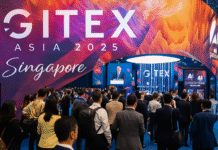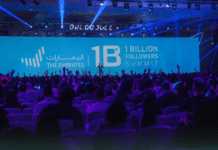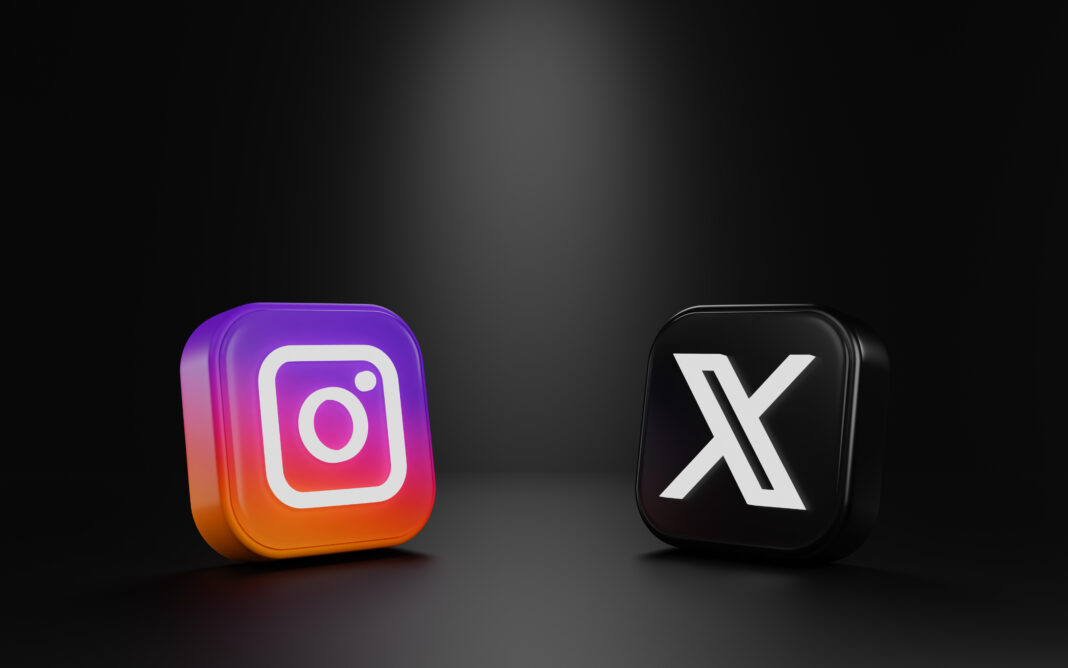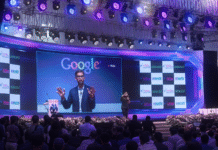Introduction to Instagram vs Twitter in 2025
The conversation around Instagram vs Twitter has evolved significantly over the past decade. Both platforms have been cornerstones of digital marketing, each offering unique strengths for brands, creators, and entrepreneurs. In the early days, Twitter was celebrated for its speed, brevity, and ability to make news go viral instantly. It became the global town square, a place where brands could distribute content and engage in real-time conversations with audiences worldwide. Instagram, on the other hand, grew as a visually driven platform where storytelling through images and videos became the key to engagement. By 2025, the debate between Instagram vs Twitter continues to be central for businesses deciding where to invest time, creativity, and resources.
Why Instagram vs Twitter Still Matters
Social media is no longer about simple broadcasting. Audiences expect interaction, authenticity, and meaningful content. The choice between Instagram vs Twitter is not about which platform is better overall but which platform aligns best with a brand’s goals. Instagram offers powerful opportunities for visual marketing and product showcasing. Twitter, now operating as X in name but retaining its essence, remains an unmatched space for real-time updates, thought leadership, and rapid customer interaction. For businesses that want to reach younger demographics, increase visibility, and build community, understanding the strengths and weaknesses of Instagram vs Twitter is essential.
The Evolution of User Behavior
User behavior on both platforms has shifted considerably. Instagram has become a space where users spend more time consuming visual content through reels, stories, and carousels. Its algorithm encourages discovery, pushing content from creators and brands beyond just existing followers. Twitter, meanwhile, continues to thrive as a conversational platform. Users still turn to it for breaking news, trending discussions, and live interactions with brands or public figures. Instagram vs Twitter represents not only a difference in format but also a difference in user expectations. Instagram users often seek inspiration and entertainment, while Twitter users seek immediacy and information.
Updated Statistics for 2025
When examining Instagram vs Twitter, updated statistics provide valuable insights into platform performance. Instagram currently has around 2.35 billion monthly active users, with 1.74 billion reachable through advertising in 2025. Twitter (now X) has approximately 586 million monthly active users. remains highly influential, especially in regions such as the United States, Japan, and India. Engagement rates differ sharply: Instagram posts still achieve higher average engagement than tweets, though overall engagement across both platforms has declined compared to five years ago. The raw numbers highlight that Instagram excels at reach and visibility, while Twitter retains power through conversation and amplification of ideas.
Audience Demographics Comparison
A closer look at demographics shows that Instagram vs Twitter shares many similarities but also key differences. Both platforms are most popular among users aged 18 to 34, making them strong choices for brands targeting younger audiences. Gender distribution is relatively balanced, though Instagram has a slightly higher percentage of female users. Twitter maintains a strong presence among professionals, journalists, and academics, while Instagram dominates among lifestyle brands, influencers, and creative industries. These differences mean that the choice between Instagram vs Twitter depends heavily on the type of audience a brand wants to attract and the kind of relationship it wants to build.
Engagement and Content Longevity
One of the biggest contrasts in Instagram vs Twitter is content lifespan. An Instagram post, whether a carousel or a reel, can generate engagement for days or even weeks after publication. Twitter content, by contrast, has a much shorter lifespan, often disappearing from user feeds within hours due to the platform’s fast pace. This difference has significant implications for marketers. Instagram rewards planned, high-quality content, while Twitter favors immediacy and frequency. Both approaches can be valuable depending on goals. Businesses aiming for long-term brand building may prefer Instagram, while those looking to spark conversations in real time may lean toward Twitter.
Functional Differences Between Platforms
The way users interact with Instagram vs Twitter also differs fundamentally. Instagram holds users within the app by limiting external links, pushing brands to focus on visual storytelling and community engagement. Twitter, in contrast, serves as a distribution tool, driving users to external websites, articles, and blogs. For businesses with content-driven strategies such as active blogs, Twitter is an excellent amplifier. For brands without extensive external content, Instagram provides a platform to build identity directly within the app. Understanding these differences is critical when evaluating Instagram vs Twitter as part of a marketing strategy.
Customer Interaction and Brand Perception
Customer service is another important aspect of Instagram vs Twitter. Twitter has long been a platform where brands manage real-time customer support, feedback, and even crisis communication. Dedicated customer support handles on Twitter are now standard for large companies. Instagram, while highly engaging, is less effective for direct problem-solving. Its interactions are built around comments and direct messages, which are less public and harder to manage at scale. For businesses where customer interaction and responsiveness are critical, Twitter provides clear advantages. For brands more focused on visual storytelling, Instagram delivers stronger results.
Advertising and Revenue Opportunities
Advertising options also separate Instagram vs Twitter. Instagram, backed by Meta, offers one of the most sophisticated advertising platforms available, with precise targeting, shoppable posts, and integrated features for e-commerce. Twitter advertising, while accessible, has not developed the same level of sophistication or integration. For product-focused brands, Instagram ads offer better opportunities for direct conversions. For content distribution and event-driven campaigns, Twitter ads remain valuable. Understanding these advertising ecosystems helps businesses decide how to allocate budget effectively between Instagram vs Twitter.
Why Both Platforms Still Matter
The discussion around Instagram vs Twitter should not always result in choosing one over the other. In fact, many successful brands use both, leveraging Instagram for visual engagement and Twitter for conversation and distribution. The challenge is not which platform is superior but how each can play a complementary role in a broader strategy. By 2025, businesses that integrate Instagram vs Twitter strategically are more likely to reach diverse audiences, maintain visibility, and build stronger connections with customers.
Updated Statistics and Growth Trends in Instagram vs Twitter
The debate surrounding Instagram vs Twitter in 2025 is best understood through a careful look at the latest statistics. Numbers provide context for how each platform has evolved, who uses them, and how they fit into the larger digital ecosystem. While both Instagram and Twitter remain influential, their growth patterns and usage trends highlight different strengths. By exploring updated statistics, businesses can better understand where their audiences spend time and how to design effective strategies.
Global User Base and Market Share
Instagram currently has around 2.35 billion monthly active users, with 1.74 billion reachable through advertising in 2025. Twitter (now X) has approximately 586 million monthly active users. This illustrates that Instagram is stronger in terms of raw adoption, while Twitter maintains a smaller but highly active user base.
Geographic Distribution of Users
The global spread of Instagram vs Twitter also shows clear differences. Instagram has a broader and more balanced distribution, with strong penetration across North America, Europe, Asia, and Latin America. Its appeal as a visual-first platform resonates across cultures. Twitter, however, has more concentrated user bases. The United States, Japan, and India account for a significant percentage of Twitter’s audience. For brands targeting these markets, Twitter remains extremely relevant. On the other hand, Instagram provides more consistent global reach, which makes it ideal for international campaigns and global product launches.
Demographic Insights
The age demographics of Instagram vs Twitter remain closely aligned, but subtle differences matter. Instagram’s largest age group continues to be users between 18 and 34, with slightly higher representation among women. It is particularly strong among college students and young professionals who are engaged with lifestyle, fashion, travel, and entertainment content. Twitter shares the same age distribution but attracts more professionals, journalists, and academics. Its audience is more likely to be male and urban, reflecting its emphasis on live commentary and thought leadership. Understanding these demographic differences helps brands decide which platform aligns more closely with their ideal customer persona.
Engagement and User Behavior
Engagement rates are where Instagram continues to lead in the comparison of Instagram vs Twitter. Despite an overall decline in engagement across the social media industry, Instagram posts such as reels and carousels still generate higher interaction compared to tweets. On average, Instagram engagement rates in 2025 average around 0.44%, with Reels slightly higher than static posts. Twitter (X) engagement has declined sharply, averaging between 0.02% and 0.05%. While these numbers may seem small, it is important to note that engagement on Twitter often extends beyond the platform. A tweet can spark conversations on blogs, podcasts, and even traditional media outlets. Instagram engagement is primarily contained within the app itself.
Content Volume and Lifespan
The volume of content produced daily on Instagram vs Twitter also shows major differences. Twitter remains one of the most content-heavy platforms, with hundreds of millions of tweets sent every day. This rapid pace makes it more difficult for individual posts to stand out and gives tweets a shorter lifespan, often measured in minutes or hours. Instagram, by contrast, has lower content volume per user but a longer lifespan for posts. A reel or carousel can continue to attract engagement for days or even weeks after publication, especially if it is boosted by the algorithm or shared widely. For marketers, this means that Instagram rewards carefully crafted content, while Twitter rewards frequent posting and real-time relevance.
Advertising Trends
Instagram vs Twitter also differ significantly in advertising adoption and effectiveness. Instagram, as part of the Meta ecosystem, offers one of the most sophisticated advertising platforms available. With features such as targeted ads, shoppable posts, and advanced analytics, it allows brands to run highly optimized campaigns. Twitter’s advertising tools, while effective for awareness and event-driven promotions, have lagged behind in sophistication. However, Twitter remains valuable for campaigns tied to news cycles, live events, and fast-moving trends. Both platforms provide measurable ROI, but Instagram tends to be more effective for direct conversions while Twitter excels in visibility and thought leadership.
Industry-Specific Insights
Certain industries perform better on one platform than the other. Lifestyle industries such as fashion, beauty, food, and travel thrive on Instagram, where visual storytelling drives consumer behavior. Technology, news, finance, and entertainment industries find greater traction on Twitter, where fast information and live discussions dominate. For brands operating in multiple industries, a hybrid approach that leverages the strengths of both Instagram vs Twitter can maximize results. By aligning industry focus with platform strengths, businesses can avoid spreading themselves too thin and instead deliver meaningful engagement where it counts.
Long-Term Growth Trends
The long-term trends of Instagram vs Twitter reflect their roles in the digital ecosystem. Instagram continues to invest in expanding its e-commerce capabilities, making it easier for users to shop directly within the app. Its focus on short-form video and augmented reality features also demonstrates its commitment to keeping users engaged. Twitter, despite challenges in user growth, has positioned itself as an indispensable platform for public discourse. It remains the go-to space for real-time updates, political commentary, and direct interactions with brands. While Instagram is building a marketplace for lifestyle engagement, Twitter remains the global conversation hub.
What the Numbers Mean for Businesses
The statistics of Instagram vs Twitter in 2025 make one thing clear: both platforms continue to play vital but distinct roles. Instagram dominates in scale, engagement, and visual storytelling. Twitter commands influence, speed, and credibility in conversation. Businesses must decide which platform best supports their goals or determine how to use both strategically. For brand awareness and product promotion, Instagram provides unmatched reach. For thought leadership, event promotion, and customer interaction, Twitter remains indispensable. By aligning goals with platform strengths, businesses can leverage the power of Instagram vs Twitter to create balanced and effective marketing strategies.
Audience and Demographic Comparison in Instagram vs Twitter
Understanding the audience is one of the most critical aspects of choosing between Instagram vs Twitter in 2025. Both platforms are popular among younger demographics, but the ways in which users engage, their motivations, and even their regional distribution vary. For brands and marketers, a deeper look into who is using Instagram vs Twitter and how they interact provides clarity on which platform offers the most potential for growth.
Age Distribution
The core audience for both Instagram vs Twitter remains young adults. Statistics show that the largest user group on Instagram is between the ages of 18 and 34. This demographic is also strong on Twitter, though the platform sees a slightly higher percentage of users in the 35 to 49 range compared to Instagram. Engagement starts to decline significantly for both platforms among those over 50, though Instagram retains better adoption among this group than in previous years, thanks to its user-friendly visual features and family-oriented content.
For businesses, this means Instagram remains an excellent choice for brands targeting Gen Z and millennials, particularly in industries such as fashion, travel, beauty, and lifestyle. Twitter, while also popular with these groups, has additional reach among slightly older professionals, making it valuable for industries such as finance, technology, and education.
Gender Representation
Gender distribution across Instagram vs Twitter is fairly balanced, but nuances exist. Instagram tends to attract more female users, especially within markets like North America and Europe. Women on Instagram are also highly engaged with lifestyle and shopping content, which explains the platform’s dominance in influencer marketing and e-commerce. Twitter, by comparison, leans slightly male, particularly in markets like India and Japan. The platform’s emphasis on live conversations, news, and commentary makes it appealing to users who value rapid information exchange. Brands should account for these differences when tailoring content strategies to either platform.
Education and Income Levels
Both Instagram vs Twitter attract users with higher levels of education, particularly college students and recent graduates. Twitter has a stronger association with professionals, journalists, and academics, making it a hub for thought leadership and discourse. Instagram, however, is more popular among creative professionals, entrepreneurs, and small business owners who rely on visual storytelling to connect with audiences.
Income levels are similar across both platforms, with the majority of active users falling into middle- to high-income brackets. This reflects the fact that internet access, smartphones, and social media usage are more prevalent among these groups. For brands offering premium products or services, both Instagram and Twitter provide strong potential for reaching affluent audiences.
Geographic Reach and Regional Trends
When comparing Instagram vs Twitter on a global scale, Instagram has wider adoption across diverse regions. It is especially strong in Latin America, Southeast Asia, and the Middle East, where visual-first content resonates with younger populations. Twitter’s adoption is more concentrated, with its largest user bases in the United States, Japan, and India. These three countries alone account for nearly half of Twitter’s audience.
For international campaigns, Instagram provides broader coverage, while Twitter is better suited for targeting specific high-influence regions. A company looking to engage audiences in North America may use both, but a brand focusing on Latin America would prioritize Instagram, while one targeting Japan would place more resources into Twitter.
Audience Motivations and Behavior
The motivations behind using Instagram vs Twitter differ, which impacts how audiences respond to brand content. Instagram users log in primarily for entertainment, inspiration, and lifestyle content. They are highly engaged with visual media such as reels, stories, and carousels. This makes Instagram ideal for brands that want to build emotional connections and showcase their identity through aesthetics.
Twitter users, however, seek immediacy and conversation. They turn to the platform for news, real-time updates, and public dialogue. This means they are more likely to engage with brands around trending topics, product launches, or timely customer service inquiries. While Instagram engagement is centered on visuals, Twitter engagement thrives on discussion and exchange of opinions.
Community and Interaction Styles
Community dynamics also differ significantly between Instagram vs Twitter. Instagram communities often form around shared interests such as fashion, fitness, travel, or art. Interaction happens largely through likes, comments, and direct messages. Twitter communities form around hashtags, trending topics, and conversations with public figures. Interaction is faster, more public, and more conversational in nature. For a brand, this means Instagram is better for cultivating loyal niche audiences, while Twitter excels at generating visibility and thought leadership in public discussions.
Implications for Marketers
The demographic comparison of Instagram vs Twitter shows that both platforms serve overlapping but distinct audiences. Instagram is stronger for brands that rely on lifestyle marketing, e-commerce, and visual storytelling. Twitter is better for companies that need to maintain thought leadership, share information quickly, or provide customer support. A brand targeting college students with fashion products would lean toward Instagram, while a tech startup seeking industry credibility would benefit more from Twitter. For businesses that span multiple demographics, a combined strategy ensures balanced reach and engagement.
Shifts in Demographics Since 2020
Since 2020, both Instagram vs Twitter have seen shifts in demographics. Instagram has grown among older age groups and continues to expand globally, especially in developing markets. Twitter, despite slower overall growth, has maintained its importance among decision-makers, professionals, and thought leaders. These shifts highlight the evolving role of each platform. Instagram is becoming more universal, while Twitter is narrowing into a space of influence rather than mass adoption. Understanding these shifts allows brands to adapt their strategies and stay aligned with audience behaviors.
Final Insights on Audience Dynamics
Audience insights for Instagram vs Twitter in 2025 reveal that the platforms are not interchangeable. They may share age demographics, but their gender distribution, professional orientation, and regional strengths differ in meaningful ways. Marketers should avoid assuming that one platform can replace the other. Instead, the most effective strategies come from understanding these nuances and aligning them with business objectives. By respecting the unique dynamics of Instagram vs Twitter, businesses can connect with the right audiences in the right ways, maximizing both reach and impact.
Engagement and Content Strategy in Instagram vs Twitter
The effectiveness of a social platform is often measured not by how many people use it but by how deeply they engage with the content. In 2025, the comparison of Instagram vs Twitter highlights two very different approaches to engagement. Instagram has cultivated a reputation for creating immersive, visual experiences that keep users within the app. Twitter, in contrast, thrives on fast-paced dialogue and sharing content across networks. Understanding the engagement dynamics of Instagram vs Twitter is essential for brands designing content strategies that maximize visibility and connection.
The Nature of Engagement on Instagram
Instagram continues to lead when it comes to in-app engagement. The platform’s algorithm promotes content that generates interactions such as likes, comments, shares, and saves. Video content, particularly Reels, has emerged as the most effective driver of engagement in 2025. Stories remain important for behind-the-scenes content, promotions, and limited-time offers, while carousel posts encourage longer attention spans by inviting users to swipe through multiple images or messages. The design of Instagram discourages external links in captions, which keeps users focused on the platform and ensures that brands compete for attention in a controlled environment.
For businesses, this means that success on Instagram depends on crafting high-quality visuals that spark curiosity and emotion. Consistency in posting, creative storytelling, and the use of interactive features like polls and quizzes within Stories enhance engagement. The challenge lies in adapting content to match evolving algorithm preferences while staying authentic to brand values.
The Nature of Engagement on Twitter
Twitter engagement is fundamentally different. The platform encourages quick interactions through retweets, replies, and quote tweets. While engagement rates per post are lower than Instagram’s, the reach of a single tweet can extend far beyond the platform when it sparks conversation. Tweets often find their way into blog posts, news articles, and broadcasts, giving Twitter disproportionate influence compared to its user base.
In 2025, Twitter threads remain a powerful format for building engagement. They allow brands and thought leaders to share extended insights in a digestible format. Live tweeting during events, responding to trending hashtags, and engaging directly with customers are other strategies that keep Twitter dynamic. Unlike Instagram, Twitter thrives on immediacy, making it the ideal platform for brands that want to react quickly to news, cultural moments, or customer feedback.
Comparing Lifespan of Content
A key difference in Instagram vs Twitter is the lifespan of posts. On Instagram, a well-crafted post can generate engagement for days or even weeks, especially if it is picked up by the algorithm. Reels, in particular, have extended lifespans, sometimes continuing to receive views and interactions months after being published. Twitter content, by contrast, moves at lightning speed. A tweet may only be visible in a user’s feed for a few minutes before being buried by new posts. Unless it gains traction through retweets or trending hashtags, its impact is short-lived.
For brands, this means that Instagram rewards careful planning and polished visuals, while Twitter rewards frequency and relevance. The same content strategy cannot work equally well on both platforms. Instead, businesses must align their posting styles with the unique rhythm of each platform.
Engagement Beyond the Platform
Another critical aspect of Instagram vs Twitter is how engagement extends beyond the app itself. Instagram engagement largely begins and ends within the app. Users like, comment, and share posts inside the platform, but content rarely travels outside unless reshared manually. Twitter, however, has the power to push content beyond its boundaries. Tweets are often embedded in news stories, shared on other platforms, or discussed in offline conversations. This amplifies the reach of Twitter content far beyond its original context, giving it an influence disproportionate to its user engagement metrics.
Effective Content Strategies for Instagram
To succeed on Instagram in 2025, brands must prioritize storytelling through visuals. High-resolution images, creative Reels, and authentic Stories perform best. User-generated content remains a powerful tool, as it builds trust and provides social proof. Brands are also investing in collaborations with influencers and micro-influencers to tap into established communities. The key is authenticity; overly polished or inauthentic content tends to underperform as users increasingly value transparency. Hashtags remain relevant but are less critical than they were years ago, with the algorithm prioritizing personalized discovery over hashtag-driven reach.
Effective Content Strategies for Twitter
On Twitter, effective strategies focus on timeliness, personality, and participation in broader conversations. Brands that engage directly with trending topics often gain visibility, though this approach requires careful navigation to avoid missteps. Twitter threads are particularly effective for building thought leadership and sharing detailed insights. Customer support remains one of the strongest uses of Twitter, with many companies maintaining dedicated accounts for rapid response. Humor, relatability, and authenticity are also key drivers of engagement on the platform. Unlike Instagram, where visuals dominate, Twitter rewards wit and relevance.
Measuring Engagement Effectively
Engagement measurement differs across Instagram vs Twitter. On Instagram, key metrics include likes, comments, shares, saves, reach, and profile visits. On Twitter, the focus is on retweets, replies, impressions, and link clicks. For businesses, it is critical to evaluate these metrics in context. Instagram engagement indicates how well content connects emotionally with audiences, while Twitter engagement often reflects how effectively a brand participates in public discourse. Comparing these metrics directly is misleading; instead, they should be evaluated against platform-specific goals.
Integration of Platforms for Engagement
A combined Instagram vs Twitter strategy can amplify engagement by leveraging the strengths of both. For example, a brand may share a new product launch visually on Instagram while using Twitter to engage in conversations about the product in real time. Instagram can showcase customer testimonials through Stories, while Twitter can host a Q and A session to answer questions instantly. By integrating strategies, businesses ensure they maximize both reach and depth of engagement.
Final Insights on Engagement
The engagement dynamics of Instagram vs Twitter show that neither platform is inherently better; they are simply different. Instagram provides stronger in-app engagement and long-lasting visibility for visual content. Twitter delivers fast-paced interactions that ripple outward into larger conversations. Brands that recognize these distinctions and tailor their strategies accordingly will achieve the best results. The most effective marketers in 2025 are those who use Instagram for visual storytelling and Twitter for immediacy, conversation, and amplification.
Advertising and Monetization in Instagram vs Twitter
The role of advertising has shifted dramatically in the debate of Instagram vs Twitter by 2025. Both platforms have matured beyond being simply social networks into advertising ecosystems where brands compete for attention. For businesses, the critical question is no longer whether to advertise but how to use each platform effectively to maximize return on investment. Instagram and Twitter both offer advertising opportunities, but their approaches, effectiveness, and potential for monetization are very different.
The Evolution of Instagram Advertising
Instagram, as part of the Meta ecosystem, has access to one of the most advanced advertising infrastructures available. Its integration with Facebook’s Ads Manager allows for highly sophisticated targeting based on demographics, interests, behavior, and location. In 2025, Instagram advertising has grown even more diverse with multiple formats, including feed ads, Stories ads, Reels ads, and shopping integrations. Shoppable posts and in-app checkout options have made Instagram a direct e-commerce channel where users can discover, evaluate, and purchase products without leaving the platform.
For brands, this means Instagram advertising is not just about awareness but also conversion. Retailers, lifestyle companies, and direct-to-consumer brands particularly benefit from Instagram’s ability to showcase products visually while providing a frictionless shopping experience. The platform has also made advances in augmented reality (AR) ads, allowing users to try on products virtually. This innovation strengthens Instagram’s reputation as a platform where advertising feels more like an extension of user experience rather than an interruption.
The State of Twitter Advertising
Twitter, rebranded as X, offers a different advertising environment. Its strength lies in promoting real-time engagement and visibility. Ads on Twitter often revolve around promoted tweets, promoted accounts, and trending hashtags. Unlike Instagram, where ads blend seamlessly into the visual feed, Twitter advertising is more conversation-driven. In 2025, brands use Twitter ads to amplify messages during events, drive awareness around trending topics, and encourage participation in public discussions.
However, Twitter’s advertising tools have historically lagged behind Instagram’s in terms of sophistication. While improvements have been made, particularly in targeting options and analytics, Twitter advertising remains less effective for direct conversions. Instead, it excels in generating visibility, brand awareness, and thought leadership. For companies that want to shape narratives, influence conversations, or build credibility, Twitter ads remain an important but complementary tool.
Comparing Cost and ROI
When comparing Instagram vs Twitter in terms of advertising cost and ROI, Instagram campaigns generally require higher upfront budgets due to increased competition. Its large user base and strong e-commerce integration make it highly sought after by advertisers, raising costs. However, Instagram also delivers stronger ROI for businesses focused on product sales, as users are accustomed to engaging with brands in a shopping context.
Twitter advertising tends to be more affordable but delivers less direct conversion. Instead, its value comes from visibility and amplification, particularly during major events or trending conversations. For example, a brand sponsoring a hashtag around a live sports event or political debate can gain massive visibility in real time. The key is to use Twitter ads strategically, recognizing that their role is more about influence than immediate sales.
Monetization Opportunities for Brands
For brands, Instagram monetization goes far beyond advertising. The platform offers creators and businesses the chance to generate revenue through features such as affiliate links, branded content partnerships, and shopping tools. Influencer marketing has become one of the dominant monetization strategies on Instagram, where creators leverage their engaged audiences to promote products authentically.
Twitter monetization, on the other hand, leans more toward thought leadership and paid subscription models. Features like Twitter Blue (X Premium) and the introduction of paid content tiers allow individuals and businesses to monetize expertise, exclusive content, or premium conversations. While these tools are still evolving, they provide unique opportunities for brands that want to build niche audiences around authority and expertise rather than lifestyle or products.
The Role of Influencers and Creators
Influencers play a central role in advertising on Instagram vs Twitter, but their impact differs by platform. On Instagram, influencers drive consumer decisions by showcasing products in aspirational or relatable contexts. The visual nature of the platform makes it ideal for fashion, beauty, travel, and food influencers. Brands benefit from partnering with influencers who can create high-quality visual content that resonates with followers.
On Twitter, influencers are less about lifestyle and more about authority. Thought leaders, journalists, industry experts, and commentators shape public conversations. Influencer marketing on Twitter involves collaboration with voices who have credibility in specific niches, such as technology, finance, or politics. Their endorsement may not directly sell products, but it builds brand trust and positions a company as part of an important conversation.
Advertising Formats That Work Best
On Instagram, the most effective advertising formats in 2025 include Reels ads, carousel ads, and shoppable posts. These formats combine storytelling with interactivity, allowing users to explore products in engaging ways. Short-form video remains the dominant format, capturing user attention and encouraging shares.
On Twitter, promoted tweets and trending hashtags remain powerful. They allow brands to join conversations already happening at scale. Sponsored Spaces (Twitter’s live audio feature) also offer opportunities for brands to host discussions, interviews, or Q&A sessions, providing a unique interactive advertising format. These formats align with Twitter’s strength as a conversational platform rather than a purely visual one.
Strategic Recommendations for Businesses
When choosing between Instagram vs Twitter for advertising and monetization, businesses must align strategies with goals. A fashion brand focused on direct e-commerce sales will see stronger returns from Instagram’s shoppable ads and influencer collaborations. A tech company launching a new product may benefit more from Twitter’s ability to spark discussions, gain media coverage, and establish thought leadership.
For businesses with resources, the best approach is an integrated strategy. Instagram can drive product discovery and sales, while Twitter can build conversation and credibility. Using the platforms together ensures both depth of engagement and breadth of visibility. For example, a campaign might launch with teaser discussions on Twitter while unveiling visual storytelling on Instagram, creating momentum across both platforms.
The Future of Advertising and Monetization
Looking ahead, the advertising ecosystems of Instagram vs Twitter are likely to continue evolving. Instagram will expand its integration with Meta’s AI tools to provide more personalized shopping experiences. Twitter will refine its premium features and expand opportunities for creators and brands to monetize expertise. Both platforms are moving toward models that reward authenticity, relevance, and community building. Brands that understand these shifts and remain flexible will be best positioned to thrive in the changing social media landscape.
Final Insights on Advertising and Monetization
The comparison of Instagram vs Twitter in 2025 highlights two distinct advertising models. Instagram excels in direct conversions, lifestyle marketing, and visual commerce. Twitter remains a hub for conversation-driven campaigns, real-time visibility, and thought leadership. Businesses that understand these differences can design strategies that leverage the unique strengths of each platform. The key is not choosing one over the other but determining how to balance them in a way that aligns with business goals. In a world where attention is scarce, Instagram and Twitter continue to provide complementary opportunities for brands to grow, monetize, and connect with audiences.
Conclusion
The comparison of Instagram vs Twitter in 2025 demonstrates that the two platforms have matured into distinct but complementary pillars of digital marketing. Instagram has evolved into the global hub of visual commerce, where storytelling seamlessly connects to shopping. With more than 2.35 billion monthly active users and deep integration of reels, shoppable posts, and AI-powered personalization, it offers unmatched opportunities for lifestyle brands, e-commerce businesses, and creators to turn engagement directly into revenue.
Twitter, now rebranded as X, continues to thrive as the world’s digital conversation hub. Despite a smaller user base of about 586 million monthly active users, it maintains unique influence through immediacy, trending topics, and thought leadership. The platform has also embraced new monetization models such as X Premium subscriptions and creator-driven revenue streams, making it particularly valuable for industries where influence, credibility, and public dialogue matter more than visuals.
Lessons from the Numbers
The statistics highlight Instagram’s dominance in scale and engagement. Its stronghold among Gen Z and millennials makes it the ideal space for lifestyle and consumer-facing brands. X, while smaller, wields disproportionate influence, particularly in markets like the United States, Japan, and India. This concentration makes it indispensable for shaping narratives, amplifying voices, and participating in cultural conversations.
Engagement and Advertising
Engagement patterns emphasize the distinction between the two platforms. Instagram content lives longer, rewarding planning, storytelling, and high-quality visuals. Reels, carousels, and Stories remain powerful tools for emotional connection and brand visibility. X, in contrast, thrives on speed and immediacy, with tweets gaining relevance through trending hashtags and real-time discussions. Advertising follows the same divide: Instagram excels at direct conversions through shoppable posts and precise targeting, while X is strongest for visibility, brand authority, and event-driven campaigns.
Strategic Takeaways for Businesses
For brands, the debate is no longer about choosing Instagram or X but about understanding how to use them together effectively. Instagram should be the driver of discovery, brand storytelling, and loyalty, while X provides real-time dialogue, thought leadership, and amplification. For instance, a company launching a new product can use X to build anticipation through live commentary and trending hashtags, then unveil polished visuals and shopping integrations on Instagram. This multi-platform synergy maximizes visibility, engagement, and conversions.
Looking Ahead
The future of Instagram vs Twitter will be shaped by innovation and evolving user expectations. Instagram is investing heavily in augmented reality and e-commerce capabilities, strengthening its role as the leader in lifestyle marketing. X is refining premium features and expanding its role as a platform for professionals and global discourse. Both platforms are under increasing pressure to prioritize authenticity, transparency, and meaningful connections, reflecting the demands of younger generations.
Final Word
Ultimately, Instagram vs Twitter is not a competition with one clear winner. Each platform serves a unique purpose: Instagram is the stage for visual storytelling and commerce, while X is the arena for influence, immediacy, and dialogue. The most successful businesses in 2025 will not ask which platform to choose, but how to integrate both into a balanced strategy. By combining Instagram’s power in visual commerce with X’s strength in conversations and credibility, brands can build sustainable, authentic, and globally relevant digital identities.










































